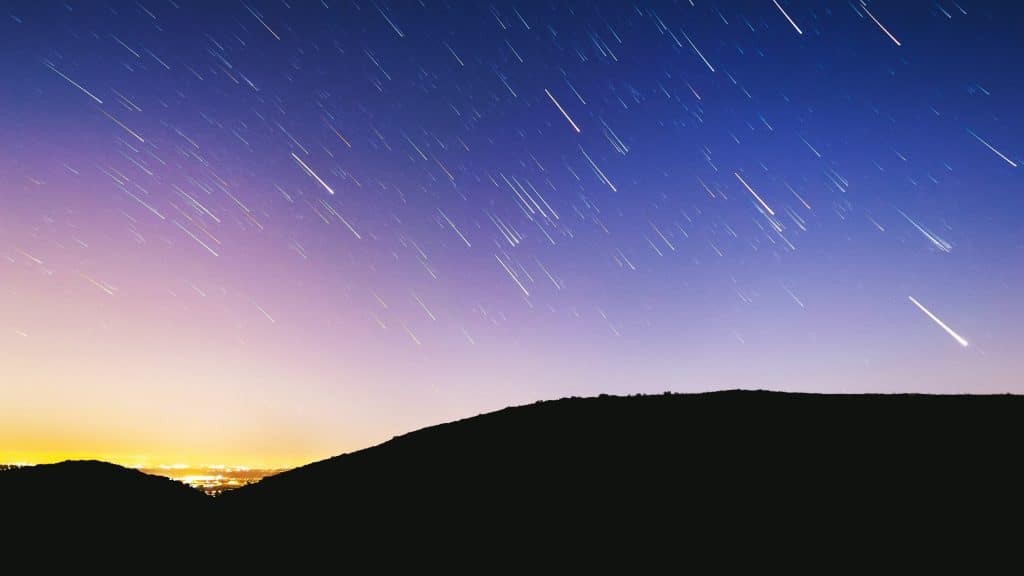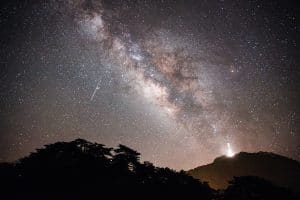
Be sure to look up this month.
If 2020’s been anything positive, it’s been an astrological spectacle – with a number of space-bound delights lighting up our skies, from blue, pink and bright-glowing moons, to meteor showers galore. And the show’s not over yet, as the Orionids are set to make their annual appearance throughout this month.

Forming each time Comet Halley returns to the inner solar system, its nucleus sheds ice and rocky dust into space – which then turns into the Orionids and the Eta Aquarids which we saw earlier this year in May. As for Comet Halley itself, we’re not set to catch a glimpse until 2061 – with the comet taking a whopping 76 years to orbit the sun, making it a once-in-a-lifetime ordeal when it does come around.
So, how come we can see the meteors? Well, the meteors are formed from leftover debris that creates their own ‘dusty trails’, and when the Earth passes through them in orbit every year, we’re left with the sights of bright, colorful streaks in the sky.

Beginning tonight (October 2) until November 7, NASA advises to look up into the sky after midnight any night (with the peak being predicted as October 21), with best viewing conditions being “well away from city or street lights”. Camp out, anyone?
“Lie flat on your back with your feet facing southeast if you are in the Northern Hemisphere or northeast if you are in the Southern Hemisphere, and look up, taking in as much of the sky as possible,” NASA advises. “In less than 30 minutes in the dark, your eyes will adapt and you will begin to see meteors. Be patient — the show will last until dawn, so you have plenty of time to catch a glimpse.”
Mid-October is set to bring the best sights to stargazers, with up to 15 meteors per hour whizzing through the skies. And if that wasn’t enough Space fun for you, there’ll also be a rare Blue Moon this Halloween (spooky!) which will mark the first time the freaky occurrence has happened in two entire decades.
